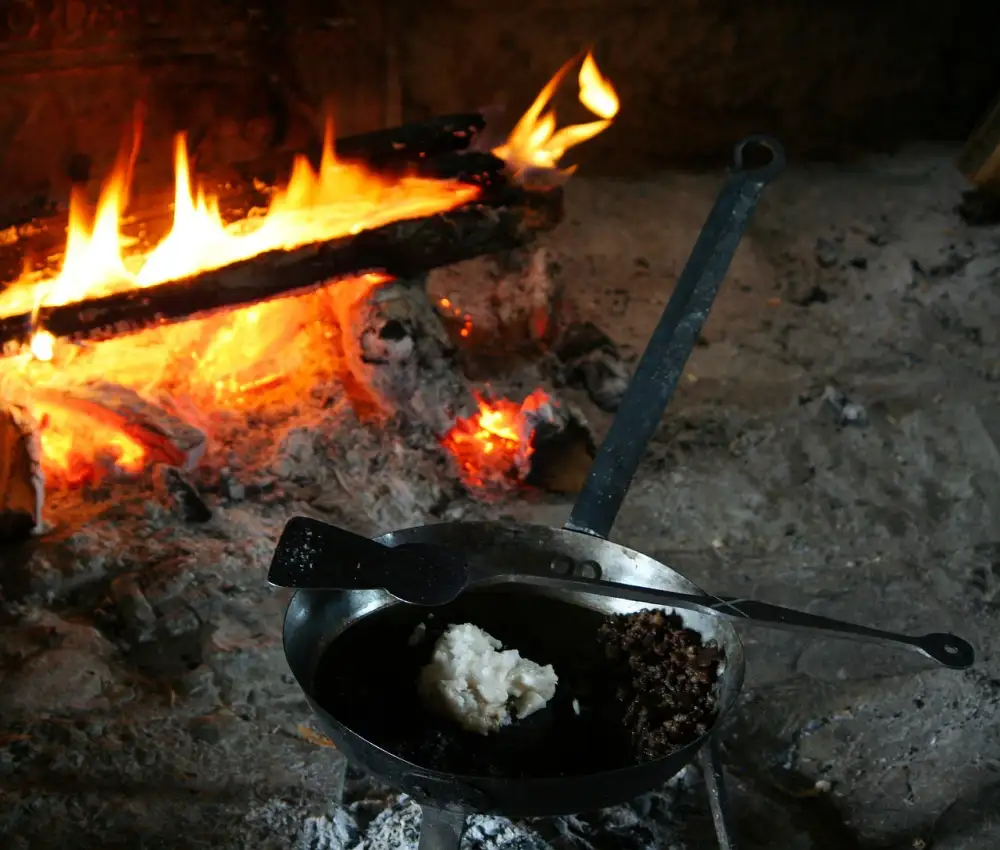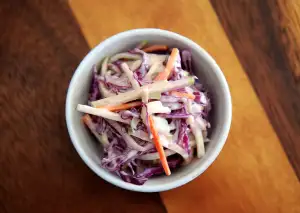Flavorful Feasts Start Here: How to Season a Cast Iron Skillet for Perfectly Cooked Delights

- Importance of seasoning for cast iron cookware
- Gather necessary materials for seasoning
- Step-by-step guide to seasoning a cast iron skillet:
- Preheating the oven
- Cleaning the skillet
- Applying a thin layer of oil
- Heating the skillet in the oven
- Cooling and storing the skillet
- Tips for maintaining a seasoned cast iron skillet
Seasoning a cast iron skillet is the secret to unlocking its full potential in the kitchen. This simple process involves creating a protective layer on the surface of the skillet, which not only prevents rust but also enhances its non-stick properties. Whether you're searing steaks, baking cornbread, or frying eggs, a well-seasoned cast iron skillet will ensure perfectly cooked delights every time. In this article, we will guide you through the steps of seasoning your cast iron skillet and share tips for maintaining its seasoning for years to come. Get ready to elevate your cooking game with flavor-packed feasts!
Importance of seasoning for cast iron cookware
The importance of seasoning for cast iron cookware cannot be overstated. Seasoning creates a natural non-stick surface that prevents food from sticking and enhances the flavor of your dishes. It also helps to protect the skillet from rust and extends its lifespan. A well-seasoned cast iron skillet distributes heat evenly, resulting in perfectly cooked meals every time. So, take the time to season your skillet properly and reap the benefits of delicious, flavorful feasts.
Gather necessary materials for seasoning
To season a cast iron skillet, you will need a few essential materials. First and foremost, you'll need a brand-new or recently cleaned cast iron skillet. Make sure it is completely dry before starting the seasoning process. Additionally, you will need a high smoke point oil such as vegetable oil, canola oil, or flaxseed oil. Avoid using oils with low smoke points like olive oil as they can create sticky residues on the skillet's surface. Lastly, grab some paper towels or a clean cloth to apply the oil evenly onto the skillet. With these materials in hand, you're ready to begin the seasoning process and unlock the full potential of your cast iron skillet!
Step-by-step guide to seasoning a cast iron skillet:
a. Preheat the oven to 350°F (175°C) and place a sheet of aluminum foil on the bottom rack to catch any drips.
b. Start by cleaning the skillet thoroughly with hot water and a stiff brush. Avoid using soap, as it can strip away the seasoning.
c. Once clean, dry the skillet completely with a towel or by placing it on a low flame for a few minutes.
d. Apply a thin layer of oil to the entire surface of the skillet, including the handle. Use a paper towel or cloth to spread the oil evenly.
e. Place the skillet upside down on the middle rack of the preheated oven. This allows any excess oil to drip off and prevents pooling.
f. Bake the skillet for one hour, then turn off the oven and let it cool completely inside before removing.
g. Once cooled, store your well-seasoned cast iron skillet in a dry place to prevent rusting and maintain its non-stick properties.
By following these steps, you'll be able to enjoy perfectly cooked delights in your cast iron skillet for years to come!
Preheating the oven
Preheating the oven is an essential step in seasoning a cast iron skillet. Set the oven to a temperature of 350°F (175°C) and allow it to fully preheat. This ensures that the skillet will heat evenly and allows the oil to penetrate the pores of the cast iron, creating a strong and durable seasoning. Preheating also helps to eliminate any moisture or residue that may be present on the skillet, ensuring a clean surface for optimal seasoning results.
Cleaning the skillet
Cleaning the skillet is an essential step in the seasoning process. After preheating the oven and allowing the skillet to cool slightly, it's time to remove any food residue or rust. Use a stiff brush or sponge to scrub away any stubborn bits, making sure to avoid using soap as it can strip away the seasoning. Rinse the skillet thoroughly with warm water and dry it completely using a clean towel or by placing it on low heat on the stove. Once cleaned, your cast iron skillet is ready for the next step in the seasoning process.
Applying a thin layer of oil
Applying a thin layer of oil is a crucial step in seasoning a cast iron skillet. After cleaning the skillet, make sure it is completely dry. Then, using a paper towel or cloth, apply a small amount of oil to the entire surface of the skillet, including the handle. Be sure to use an oil with a high smoke point, such as vegetable oil or flaxseed oil. Rub the oil into the skillet, making sure to cover every nook and cranny. The goal is to create a thin, even layer of oil that will bond with the iron and create a non-stick surface. Remember, less is more when it comes to applying oil – you don't want it to pool or become sticky. Once you've applied the oil, you're ready for the next step: heating the skillet in the oven.
Heating the skillet in the oven
Heating the skillet in the oven is a crucial step in the seasoning process. Once you have applied a thin layer of oil to the skillet, it's time to give it some heat. Preheat your oven to around 350°F (175°C). Place the skillet upside down on the middle rack of the oven, with a sheet of aluminum foil or a baking tray on the bottom rack to catch any drips. This will help ensure an even distribution of heat and prevent any oil from pooling in the skillet. Allow the skillet to heat in the oven for about one hour. This high temperature will help open up the pores of the cast iron and allow the oil to penetrate and bond with its surface, creating that coveted non-stick coating. Once the hour is up, carefully remove the skillet from the oven using oven mitts or potholders, as it will be extremely hot. Remember to handle it with care and avoid touching any hot surfaces.
Cooling and storing the skillet
After heating the skillet in the oven, it's important to allow it to cool completely before storing. This will prevent any moisture from accumulating and causing rust. Once cooled, use a paper towel to gently wipe off any excess oil. Avoid using soap or harsh scrub brushes as they can strip away the seasoning. Instead, simply rinse the skillet with hot water and use a soft cloth or sponge to remove any food residue. Finally, dry the skillet thoroughly and store it in a cool, dry place. If you stack your cast iron skillets, place a paper towel between each one to prevent scratching. With proper cooling and storage, your well-seasoned cast iron skillet will be ready for many more flavorful feasts to come!
Tips for maintaining a seasoned cast iron skillet
1. Avoid using soap: After each use, simply rinse the skillet with hot water and scrub gently with a brush or sponge. Soap can strip away the seasoning, so it's best to avoid it.
2. Dry thoroughly: After washing, make sure to dry the skillet completely to prevent rusting. You can place it on a stovetop burner on low heat for a few minutes or put it in the oven at a low temperature.
3. Apply a thin layer of oil: To maintain the seasoning, apply a thin layer of oil after each use. This helps to keep the skillet well-seasoned and prevents moisture from causing rust.
4. Store properly: Store your cast iron skillet in a dry place to prevent moisture buildup. You can also place a paper towel or cloth inside the skillet to absorb any excess moisture.
5. Avoid acidic foods: Acidic foods like tomatoes and citrus can break down the seasoning over time. It's best to avoid cooking such foods in your cast iron skillet or use an enamel-coated cast iron pan instead.
By following these tips, you can ensure that your cast iron skillet remains well-seasoned and ready to create delicious meals for years to come!
By taking the time to properly season your cast iron skillet, you are unlocking a world of culinary possibilities. The benefits of a well-seasoned skillet are numerous. Not only will your food cook more evenly and develop a beautiful crust, but it will also be infused with rich, complex flavors.
A seasoned cast iron skillet is incredibly versatile and can be used for everything from searing steaks to baking cornbread. It retains heat exceptionally well, allowing for precise temperature control and ensuring that your dishes are cooked to perfection.
Furthermore, a properly seasoned skillet is naturally non-stick, reducing the need for excessive oil or butter in your cooking. This not only makes your meals healthier but also makes cleanup a breeze.
So go ahead and embrace the joys of cooking with a well-seasoned cast iron skillet. Experiment with new recipes, savor the enhanced flavors, and delight in the satisfaction of creating delicious meals that will leave your taste buds singing. With proper care and maintenance, your seasoned cast iron skillet will continue to bring you flavorful feasts for years to come.
Published: 16. 01. 2024
Category: Recipes



